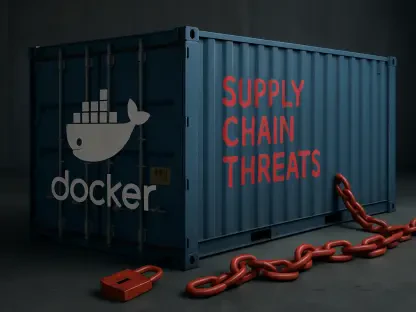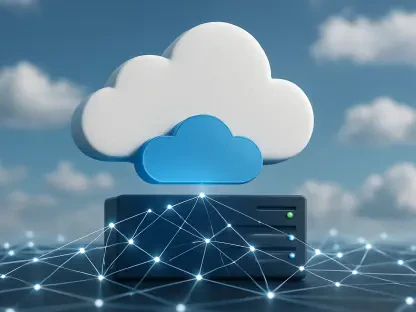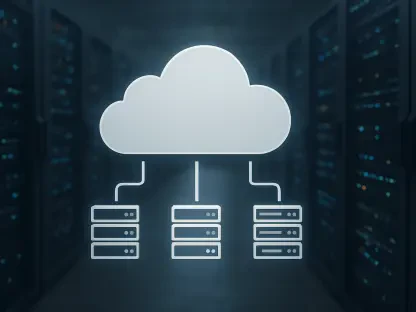The rise of Software as a Service (SaaS) applications has significantly transformed the IT landscape, offering unprecedented convenience and efficiency for enterprises across various sectors. However, as reliance on SaaS solutions continues to grow, security concerns have surged to the forefront. A recent study underscores that 78% of U.S. technology leaders view SaaS security threats as a paramount issue, highlighting the urgent need to address these vulnerabilities in an increasingly digital world. This mounting concern is driven by the proliferation of SaaS applications, which has seen the average number of applications in enterprises balloon to 130 per company, up from just 80 in 2020.
The Surge in SaaS Application Usage
The proliferation of SaaS applications is reshaping the way businesses operate, with enterprises now averaging 130 applications per company, a significant increase from just 80 in 2020. This rapid growth is driven by the need for streamlined operations, scalability, and speed-to-market, making SaaS an attractive option for many organizations. However, with this exponential growth comes heightened security risks, as each SaaS application necessitates access to enterprise data by third-party providers. This access presents significant vulnerabilities, exposing businesses to potential cyberattacks and accidental data leaks.
As Shiva Nathan, founder and CEO of Onymos, points out, each SaaS application can be an entry point for malicious actors. The ubiquitous nature of these applications means that every new solution integrated into a company’s ecosystem represents a potential attack surface. The healthcare sector, in particular, has seen a spike in software supply chain attacks, driven by the pivot to virtual care models amid the COVID-19 pandemic. This shift has exacerbated existing vulnerabilities and underscored the critical need for robust security measures to protect sensitive patient data and maintain the integrity of healthcare systems.
Dependence on Third-Party Vendors
The increasing dependence on third-party vendors is evident across various sectors, including healthcare, government, logistics, supply chain, manufacturing, retail, banking, financial services, and education. Gartner’s projection that 45% of organizations will have experienced software supply chain attacks by 2025 speaks volumes about the growing reliance on these vendors and the associated risks. The recent report reveals that nearly half of tech leaders faced cybersecurity incidents through third-party SaaS applications in the past year, underscoring the pressing need for reevaluating vendor relationships and security strategies.
Shiva Nathan emphasizes the paradoxical tension between the reliance on SaaS for quick deployment and the necessity of data ownership. As organizations gather momentum in their SaaS adoption journeys, this tension becomes more pronounced, creating a complex landscape where speed-to-market and data security must be carefully balanced. The critical importance of data retention for custom-built internal applications is another aspect that cannot be overlooked. Surprisingly, 91% of respondents in a survey involving 300 app development, IT, and security leaders emphasize this need, despite the growing dependence on SaaS for rapid deployment solutions.
Emphasizing Data Retention and Security
Security and data privacy remain at the forefront of enterprise concerns, with 72% of leaders prioritizing security and 65% highlighting data privacy. These priorities are reflected in organizations’ application and software development projects, where ensuring data privacy, building secure applications, and maintaining full control over data ownership have become top objectives. The survey further reveals that 65% of internally developed applications are business-critical, yet only 36% of technology leaders run all their applications on-premise or on private clouds. This indicates a significant shift toward SaaS and cloud-based solutions, highlighting the need for robust security measures to protect critical business applications in an increasingly digital landscape.
With the escalating threats, enterprises must reassess their security postures concerning their SaaS and cloud strategies. Nathan underscores the importance of having a robust “data posture” alongside security measures, urging companies to scrutinize their data-sharing practices with SaaS vendors critically. The rise of AI products and services adds another layer of complexity, making it even more crucial for enterprises to question the necessity and destination of shared data to safeguard against potential breaches.
Implementing Rigorous Security Measures
The emergence of Software as a Service (SaaS) applications has fundamentally reshaped the IT landscape, bringing remarkable convenience and efficiency to enterprises in various industries. Despite these advantages, the increasing reliance on SaaS solutions has escalated security concerns among technology leaders. A recent study highlights that 78% of U.S. tech leaders consider SaaS security threats their top concern, underscoring the critical need to address these issues in our increasingly digital era. This growing unease stems from the rapid expansion of SaaS applications, with the average number of applications per enterprise soaring to 130, up from just 80 in 2020. Such a dramatic increase underscores the vulnerability and complexity of managing numerous SaaS environments, which often lack consistent security protocols. Enterprises are now faced with the challenge of balancing the benefits of SaaS with the imperative of securing their digital assets. As the SaaS landscape continues to evolve, it is crucial for organizations to prioritize robust security measures to mitigate risks and protect sensitive information.









